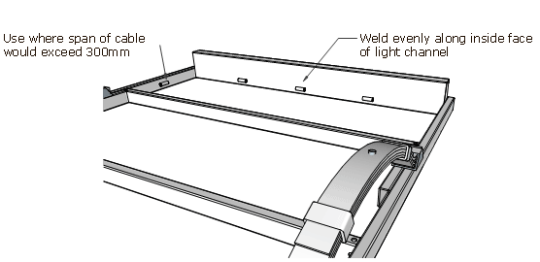6' x 4' Wooden Sider Trailer
Guards & Trim
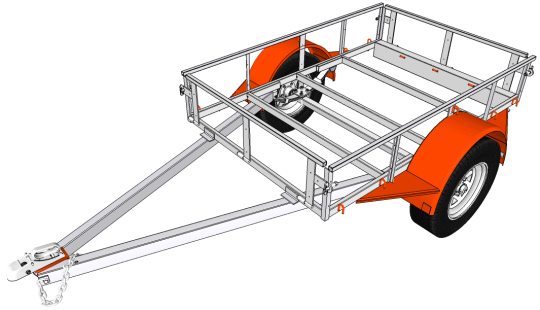
NOTE - The guard position shown is only approximate and should be used as a guide only. To get the most accurate position of the guards, dry fit the hubs to the axles, and fit, with the wheels, to the trailer.

Adequate clearance between the guard and tyre is essential to prevent build up of mud and stones and rubbing of the tyres on the guards under load.
Place an offcut of timber or steel around 50mm thick on top of the tyre and lower the guard onto this. Stand back and check the clearance around the front and rear. 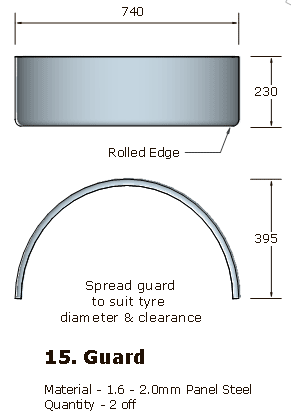
The guard can be pulled open if required to allow for a better fit.
Note - Whatever measurement you pulled the guard out to, make sure that the other guard matches.
The guard needs to have roughly equal clearance around the tyre at the front, top and rear, but pays to give a little extra at the top and rear to compensate for spring movement. A good rule of thumb is 50mm clearance at the front, 60mm at the top and 70mm at the rear, or of similar ratios.
Once the guard is in the correct position, clamp into position and step back and have a check.
Mark the position where the centre upright touches the guard. Remove the guard and cut at the marks, 6mm deep to allow the guard to sit flush with the inside face of the centre upright.
Clamp guard back in position and tack weld the guard to the centre upright and chassis rail on both sides. Step back again and make sure that the guard is in the correct position.
If the guard doesn't look quite right, now is the time to adjust it.
GUARD BRACE
Guard braces provide a couple of necessary functions, firstly to give the guard strength and support especially as the guards are normally the first things to get knocked around. Secondly they function as a step onto and into the trailer. Be wary of using a piece of rod or pipe to brace the guard - slip on this when you are climbing into the trailer, and you have a good chance of breaking your leg if you fall between the brace and the trailer.
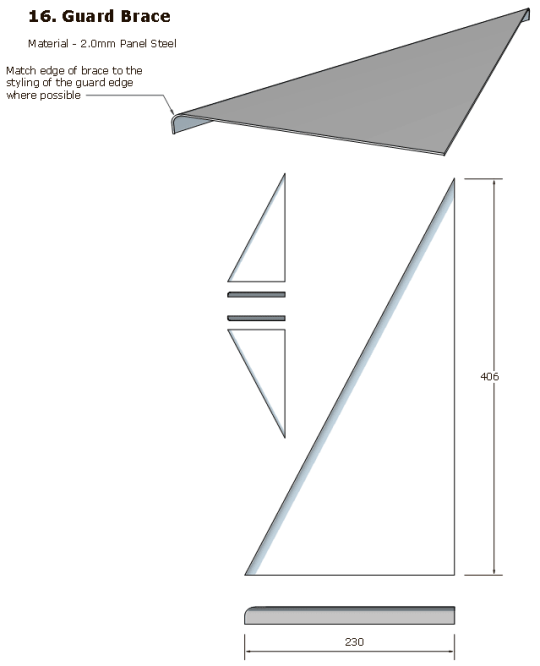
When fabricating the braces, ensure you make 2 pieces as per the drawing and 2 pieces with the lip folded the opposite direction.
When fitting, make sure the brace is square with the side and flush with the underside of the chassis rail. This is another job where a spare pair of hands is useful. An out of square brace is very noticeable and can make the trailer look shoddily built, so take care getting it right.
Once everything is tack welded in position and looking right, stitch weld the brace to the guard and chassis rails and fully weld the guard to the chassis rail and centre upright.
TIE HOOKS
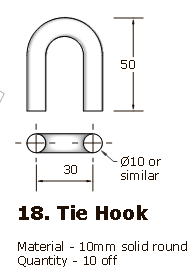
Tie hooks can be made by rolling a piece of rod around a former in a vice and cutting to size. The easiest tie hooks are made from chopping off the end of decent sized chain links.
To prevent your rope chaffing, make sure all surfaces and edges of the tie hooks are smooth.
Weld the tie hooks with good strong welds to the chassis rail, side and centre uprights.
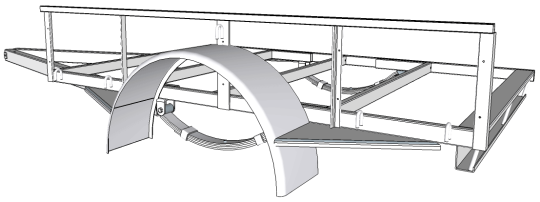
CONDUIT TUBE
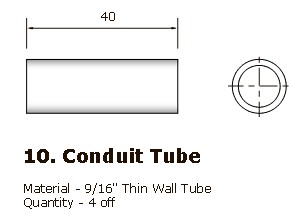
9/16" thin wall (ERW) tube has been used here as we are already using the tube elsewhere on the trailer and it gives good support to the cable. If the tubing is unavailable, use a couple of tie rail offcuts (25 x 25 x 2.5mm SHS).
Weld the conduit tube along the inside face of the chassis rail and along the front inside face of the light channel as shown below.
